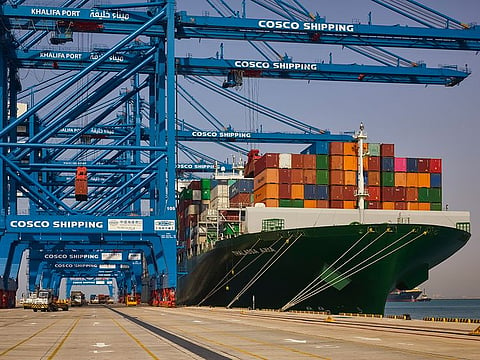Ships worldwide steer clear of Strait of Hormuz, tanker freight rates jump 24%
MarineTraffic shows rerouting trends as tanker rates surge amid Iran–Israel tensions

Dubai: International shipping is visibly redrawing its routes around the Strait of Hormuz, one of the world’s most critical oil chokepoints, as operators seek to avoid conflict zones triggered by Israel–Iran tensions. Live vessel-tracking platforms like MarineTraffic and recent naval advisories report growing rerouting activity.
According to the US-led Joint Maritime Information Centre (JMIC), electronic interference near Iran’s Bandar Abbas port and the Strait has disrupted ship navigation systems since June 13, prompting concern among fleet operators. Meanwhile, MarineTraffic data reveal a drop in straight-path density in the Strait, suggesting many vessels are now taking longer detours.
'Exercising caution'
Shipping groups, including BIMCO, say owners are “exercising extra caution” and often avoiding the Arabian Gulf entirely – even though the Strait remains officially open. Greece and the UK have issued advisories urging shipping lines to monitor routes and log Hormuz crossings, adding to the perception-driven disruption.
At the same time, tanker freight rates have shot up sharply—on Friday, Kpler reported that VLCC (Very Large Crude Carrier) freight rates from the Gulf to China surged 24% to $1.67 per barrel, marking the year’s steepest one-day spike amid heightened inflation of shipping risk. Analysts now expect further rate increases as insurers tack on war-risk premiums, even though official rates have yet to adjust.
Why it matters for UAE stakeholders
For companies and port operators in the UAE’s energy and logistics sectors, these developments carry immediate cost and operational implications:
Longer voyage times: Rerouting ships around the Strait means extended trips – costing more in fuel and crew hours.
Rising insurance costs: Tensions drive up marine insurance premiums, adding to shipping rates.
Higher costs upstream: Around 20% of global oil trade flows through the Strait, and any disruption reverberates across supply chains
UAE's strategic pipelines: Local alternatives, like the Fujairah export terminal, ease pain, but can’t fully absorb volumes diverted from sea routes
Bottom line
Global shipping is already adapting to heightened risks near the Strait of Hormuz. With tanker freight rates jumping over 20% and major flag states urging route adjustments, UAE importers, exporters, and logistics groups should brace for higher costs and tighter scheduling until tensions subside or safer corridors are reinstated.
Sign up for the Daily Briefing
Get the latest news and updates straight to your inbox


